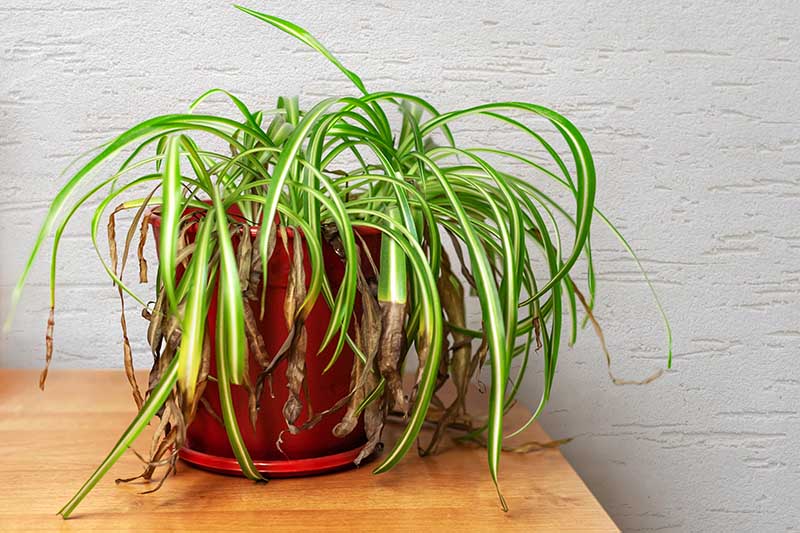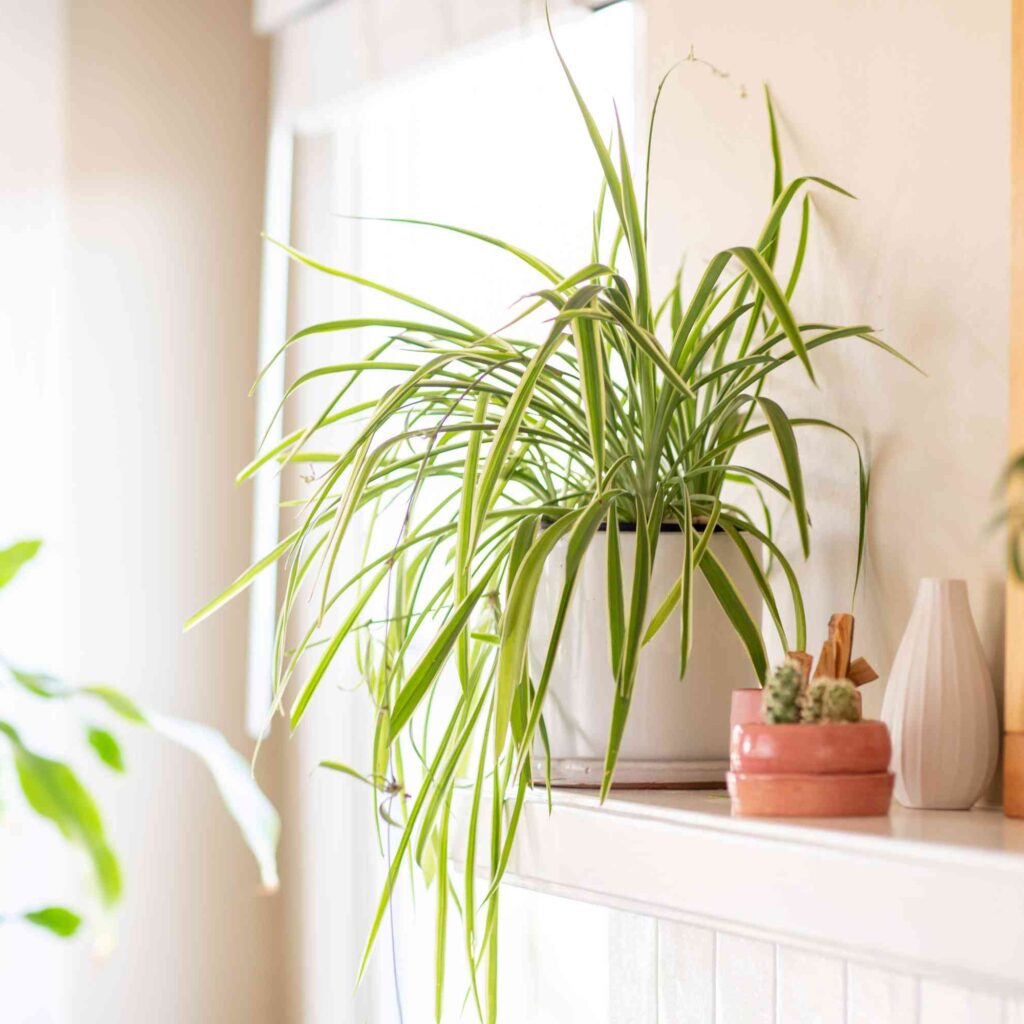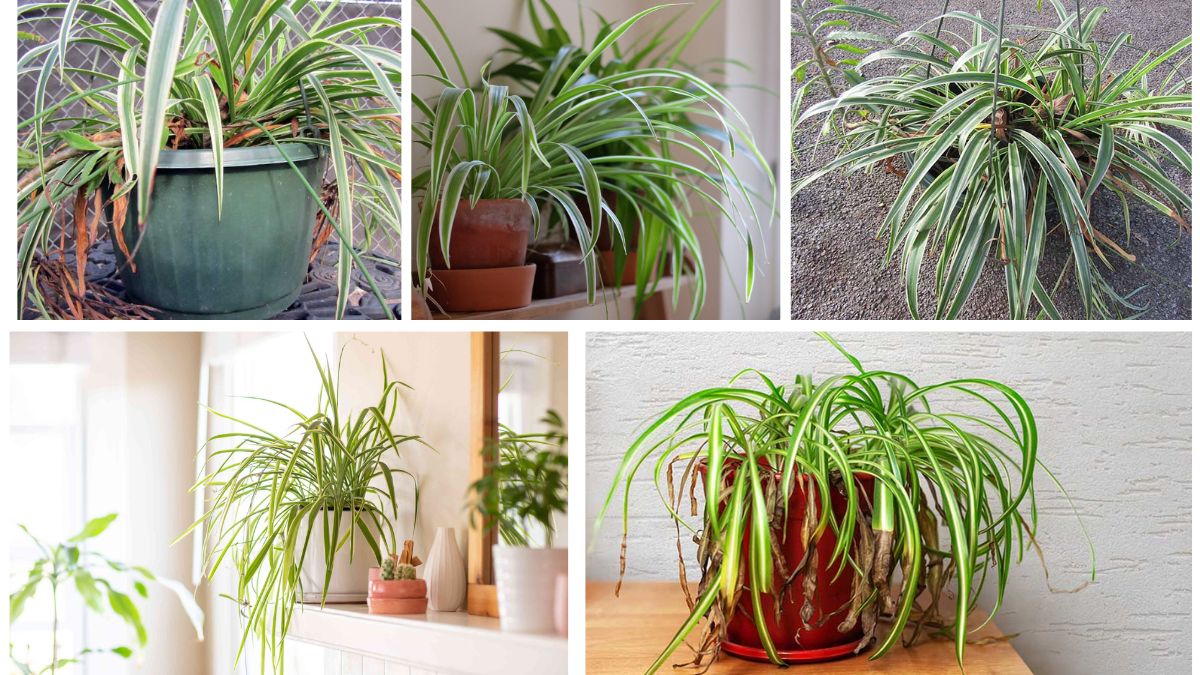The spider plant (Chlorophytum comosum) is a classic indoor favorite, adored for its arching leaves, easy care, and air-purifying qualities. With their elegant green-and-white striped foliage, spider plants brighten up homes, offices, and even outdoor shaded patios. But while they are often labeled as “low-maintenance,” many plant owners still struggle with dull, drooping, or browning leaves. The truth is, spider plants thrive with just a little bit of tender loving care (TLC). If you want yours to stay strong, vibrant, and glossy, it’s all about striking the right balance of light, water, nutrition, and grooming.
This guide dives deep into everything you need to know about keeping spider plant leaves shiny, resilient, and full of life.
Why Spider Plant Leaves Lose Their Shine

Before mastering the TLC routine, it’s important to understand the common reasons spider plant leaves lose their healthy glow:
- Low Humidity: Dry indoor air, especially from heaters or air conditioners, can leave leaves dull and prone to brown tips.
- Overwatering or Underwatering: Water stress is a major cause of limp or faded leaves.
- Dust Build-Up: Indoor plants naturally accumulate dust, which blocks sunlight absorption and reduces shine.
- Nutrient Deficiency: Lack of essential minerals like magnesium or iron can make leaves look pale or weak.
- Improper Lighting: Too much direct sun can scorch leaves, while too little makes them lose vibrancy.
Understanding these factors helps you create the perfect care plan to maintain glossy, healthy foliage.
Step 1: Perfect the Light Conditions

Spider plants love bright, indirect sunlight.
- Ideal Placement: Near an east- or north-facing window where they get plenty of natural light but not harsh afternoon sun.
- Avoid Direct Sunlight: Too much sun scorches their leaves, turning them brown and crispy.
- Low Light Tolerance: While spider plants can survive in low light, their leaves may lose vibrancy and variegation.
Pro tip: Rotate the plant every few weeks to ensure all sides get equal exposure.
Step 2: Watering with Care

Watering is often the trickiest part of spider plant care.
- Water Schedule: Water once the top 1–2 inches of soil feels dry. On average, this means once a week during spring and summer and less in winter.
- Use Room-Temperature Water: Cold water shocks the roots, while warm water promotes faster absorption.
- Avoid Overwatering: Too much water leads to root rot, resulting in droopy, dull leaves. Always empty saucers under pots to prevent stagnant water.
- Filtered or Rainwater Preferred: Spider plants are sensitive to fluoride and chlorine in tap water, which often cause brown leaf tips. If possible, use distilled or rainwater.
Step 3: Humidity Boost for Leaf Shine
Spider plants thrive in moderate humidity (40–60%). If your indoor air is too dry, their leaf tips will brown and lose shine.
- Mist Occasionally: Light misting keeps leaves hydrated but avoid overdoing it to prevent fungal issues.
- Use a Pebble Tray: Place the pot on a tray filled with pebbles and water—this naturally raises humidity around the plant.
- Group Plants Together: Plants release moisture into the air, so grouping several together helps maintain humidity.
Step 4: Feeding for Vibrant Growth

Nutrition is key to strong and glossy spider plant leaves.
- Fertilizer Schedule: Use a balanced liquid fertilizer (10-10-10 or 20-20-20) once every 2–3 weeks during the growing season (spring and summer).
- Cut Back in Winter: Reduce feeding to once every 4–6 weeks when growth slows down.
- Watch for Overfeeding: Too much fertilizer causes leaf burn and yellowing. Flush the soil occasionally to prevent salt build-up.
- Organic Options: Compost tea or diluted fish emulsion can boost leaf strength naturally.
Step 5: Cleaning and Grooming Leaves
Shiny leaves don’t just happen—they need a little grooming!
- Wipe Dust Off: Use a soft, damp cloth or sponge to wipe leaves gently every few weeks. This restores shine and allows better photosynthesis.
- Avoid Leaf Shine Sprays: While tempting, commercial sprays often clog pores (stomata) and harm long-term health.
- Pruning: Trim off brown or yellowed leaf tips with sharp, sterilized scissors. Always cut at an angle to mimic the natural leaf shape.
Step 6: Soil and Repotting Essentials

Healthy leaves start with healthy roots.
- Best Soil Mix: Use a well-draining potting mix with peat, perlite, and compost.
- Repot Every 1–2 Years: Spider plants grow quickly and become root-bound, which can stress them. Repot into a slightly larger pot when roots are circling the bottom.
- Check for Pests: During repotting, inspect roots and leaves for pests like spider mites or mealybugs, which can dull the leaves.
Step 7: Propagation and Renewed Growth
Propagating spider plants not only multiplies your greenery but also rejuvenates the mother plant.
- Baby Spiderettes: Spider plants produce plantlets (spiderettes) at the end of long stems. Snip them off once they have small roots and plant them in fresh soil.
- Water Propagation: Place spiderettes in a glass of water until roots develop, then transfer to soil.
- Rejuvenation Effect: Regular propagation encourages the mother plant to redirect energy into leaf health and shine.
Troubleshooting Common Leaf Problems
Even with good care, spider plants sometimes develop issues. Here’s how to fix them:
- Brown Leaf Tips: Usually caused by fluoride in tap water or low humidity. Switch to filtered water and raise humidity.
- Yellow Leaves: Overwatering or poor drainage—let soil dry slightly before watering again.
- Pale, Limp Leaves: Indicates low light or nutrient deficiency. Move to a brighter spot and feed lightly.
- Curled or Droopy Leaves: Often from underwatering or sudden temperature changes. Stick to a steady watering routine.
Seasonal Care for Year-Round Shine
- Spring and Summer: Focus on active growth—regular watering, feeding, and grooming.
- Fall: Reduce watering slightly and prepare for slower growth.
- Winter: Keep away from cold drafts or heaters. Water sparingly and wipe leaves to prevent dust build-up.
The Secret to Glossy Spider Plant Leaves
The real secret to shiny spider plant leaves isn’t a miracle product—it’s consistent TLC. By balancing light, water, nutrition, humidity, and grooming, you create the perfect environment for spider plants to thrive. Over time, the result is a lush, vibrant plant with cascading glossy leaves that brighten any indoor space.
Final Thoughts
Spider plants are forgiving companions, but they reward consistent care with unmatched beauty. With the right TLC, your spider plant will not only stay strong and shiny but also multiply with spiderettes, filling your home with endless greenery. From beginners to seasoned plant lovers, caring for spider plants is a joyful experience—especially when those glossy leaves reflect the effort you’ve put in.
So, if you’ve ever admired a spider plant with vibrant, glowing foliage, now you know the secret: a little daily care goes a long way in creating that picture-perfect shine.





